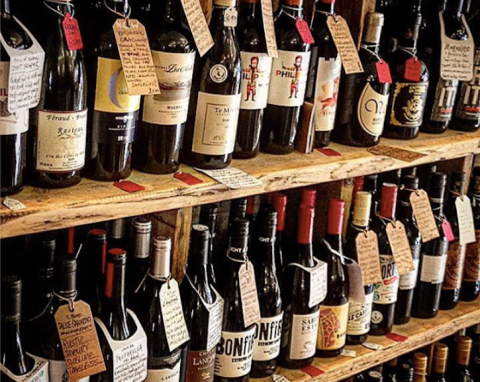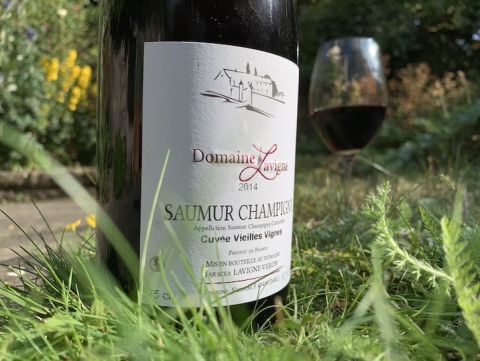From £12.95 (for the 2014 Vieilles Vignes) and £11.89 (for the 2017 Vieilles Vignes)
From €8, $14.99 (for the non-Vieilles Vignes)
Find the Vieilles Vignes
Find the non-Vieilles Vignes
Great wine is all about the story, and this one starts ten years ago. If I hadn't met a girl called Kath at a Swing Patrol dancing class in London in 2009, then I would never have gone on to meet her friends Sarah and Tom, who live on a beautiful farm near Betws-y-Coed in north Wales. Here's Tom and his kids, and the view from their front garden.
We would never have visited them each year, and I would never have stumbled across The Grape To Glass in neighbouring Rhos-on-Sea, an independent wine shop with the most unexpectedly brilliant range of wines, run by an escapee from the London media world who seems to be single-handedly bringing some of the world's most interesting wines to north Wales, a cast of thousands featuring everything from local bottle-fermented Solaris to minimal-intervention Mourvèdre from the Swartland – and pretty much everything in between.
This includes Domaine Lavigne's delicious Saumur-Champigny, which I bought from The Grape To Glass in May and opened this week, for two important reasons.
Firstly because it's the perfect chillable red for a warm day like today, and this forum discussion was a timely reminder of the joys of Loire Cabernet Franc. Secondly because I've got tons of wine to get through before relocating to Singapore next week, with the aforementioned Kath. Last weekend, in a pre-departure pilgrimage, we revisited the brilliant London pub where we celebrated our wedding seven years ago.
Now, to be fair, that story may not mean much to you, so let's see what the wine itself can offer. Domaine Lavigne is a family-owned estate of 42 ha (104 acres), farmed sustainably (though without certification). Beyond that, their website offers only well-worn tropes about tradition, traceability and terroir.
Not especially inspiring, I'm afraid. So how about this: according to The Grape To Glass on Twitter:
'It’s the only Saumur we stock after trying HEAPS. Stood out a mile.'
Or how about the fact that I tasted several consecutive glasses from a bottle that started fridge-cold (about 8 °C/46 °F) and warmed up to garden temperature (about 23 °C/73 °F) and concluded that while the nose was more suppressed when colder, and the tannins more grainy, the palate was deliciously savoury and snappy with youthful red fruit; whereas the warmest glass was far more savoury and seemingly more mature. Neither was better as such, but it was a brilliant demonstration of how much temperature can change the perception of a wine.
The cuvée I tasted was the 2014 Vieilles Vignes, which conforms exactly to expectations of grape and origin: crunchy red fruit, a dash of green herbal character, light body, semi-firm tannins. The quality is evident from the long finish, which leaves floral aromas as well as more meaty, leathery notes. It cost me £13.49, and the 2014 is still available online (although The Grape To Glass now stocks the 2016).
For fans of the style, or any wine lover looking for a classic red to chill down, Domaine Lavigne's Saumur-Champigny offers an ideal solution. But more importantly than that, perhaps this wine could spark your own story.
Perhaps you'll go to Rhos-on-Sea to buy it in person (if you are anywhere near, you really should. You could even stay in Sarah and Tom's cabin!).
Perhaps you'll open it with your own loved ones and reminisce about the twists of fate that brought you together.
Or perhaps you'll sit with it over the course of an evening in your garden, witnessing its evolution as it gets warmer and more aerated, a reminder that wine isn't an objective in itself but a reflection of and accompaniment to our lives; an intriguing and intoxicating reflection of the wonder and variety in the world.
(Incidentally, Domaine Lavigne's UK importer tell me that current vintages no longer have Vieilles Vignes printed on the label, meaning that the label is now identical to the non-Vieilles Vignes – referred to as 'Traditionnelle' on the producer's website, although that term doesn't appear on the label either. Apparently, the blend for the UK market bottling is a specific old-vines selection, although with identical labels I suspect any difference between the UK and non-UK bottlings is in fact negligible.)
















